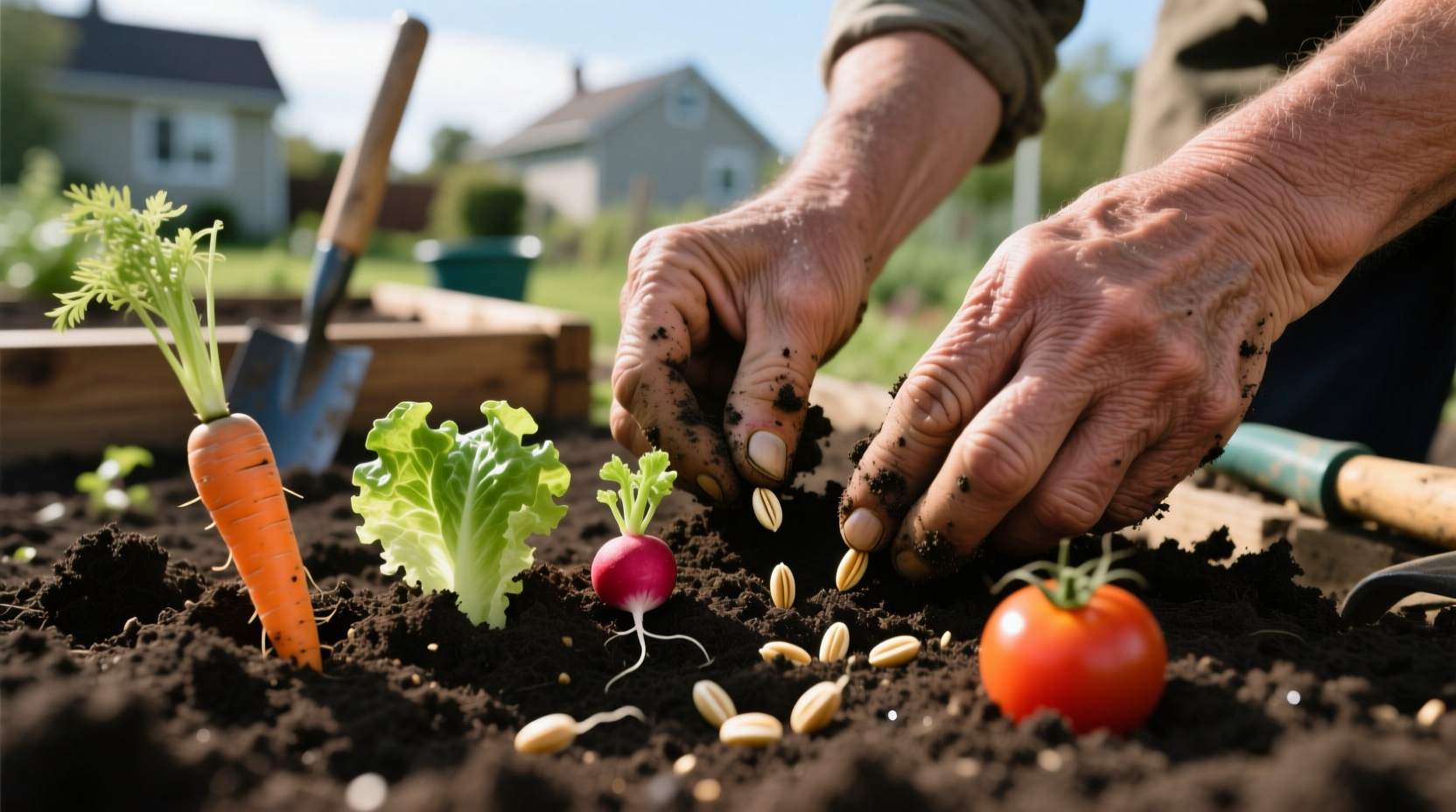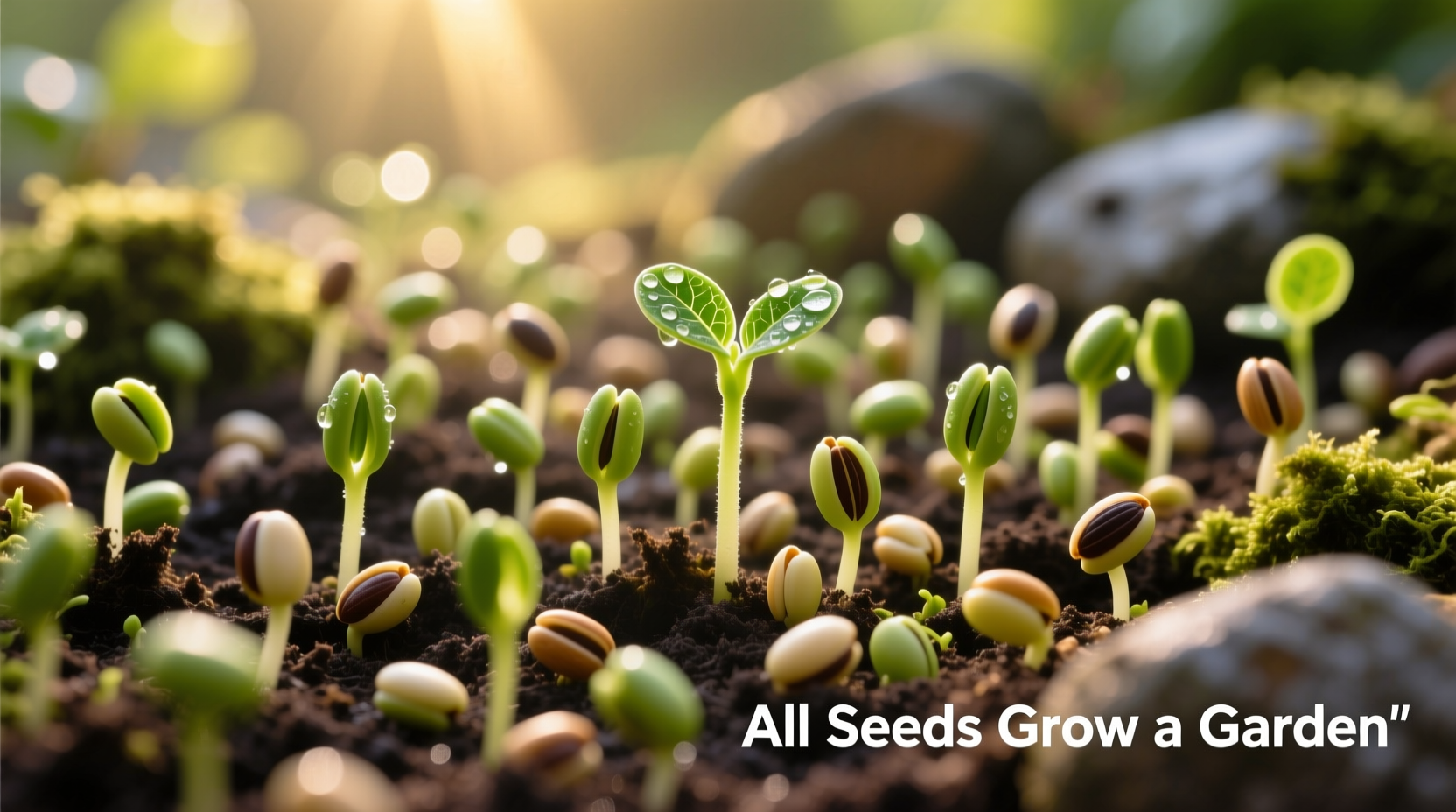Discover the complete range of seeds perfect for your garden: vegetables like tomatoes, peppers, and lettuce; flowers including marigolds and zinnias; and herbs such as basil and cilantro. Success depends on your climate zone, planting season, and soil conditions. This guide reveals exactly which seeds thrive in different conditions, when to plant them, and how to maximize your harvest with professional techniques.
Starting a garden from seeds is one of the most rewarding and cost-effective ways to create a thriving outdoor space. Whether you're a first-time gardener or expanding your existing plot, understanding which seeds work best for your specific conditions can transform your results. This comprehensive guide cuts through the confusion to give you actionable information about every seed category worth growing.
Understanding Seed Types: Making Informed Choices
Before selecting seeds, understand the fundamental categories that affect your gardening success. Not all seeds perform equally in every garden, and choosing wisely prevents wasted effort and disappointment.
Open-pollinated seeds come from plants pollinated naturally by insects, wind, or other methods. These seeds produce offspring similar to the parent plant, making them ideal for seed saving. Heirloom varieties fall under this category and have been passed down through generations, often offering superior flavor but sometimes less disease resistance than modern hybrids.
Hybrid seeds (labeled F1) result from controlled cross-pollination of two different parent plants. They often provide improved disease resistance, higher yields, or specific traits like uniform ripening. However, seeds saved from hybrid plants won't produce identical offspring, so you'll need to purchase new seeds each season.
According to the USDA Agricultural Research Service, understanding your local climate zone is critical when selecting seed varieties. The USDA Plant Hardiness Zone Map divides North America into 13 zones based on average annual minimum winter temperatures, helping gardeners choose plants that will thrive in their specific conditions.
Essential Seed Selection Guide by Season
Planting at the wrong time guarantees failure, regardless of seed quality. This seasonal guide helps you match seeds to optimal planting windows based on your region's first and last frost dates.
| Season | Best Seeds to Plant | Soil Temperature | Special Considerations |
|---|---|---|---|
| Early Spring | Lettuce, spinach, peas, radishes, kale | 40-50°F (4-10°C) | Plant 4-6 weeks before last frost |
| Late Spring | Beans, cucumbers, corn, squash | 60-70°F (15-21°C) | Wait until soil warms after last frost |
| Summer | Okra, sweet potatoes, southern peas | 70-85°F (21-29°C) | Requires consistent moisture |
| Fall | Beets, carrots, broccoli, turnips | 50-65°F (10-18°C) | Plant 6-8 weeks before first frost |
Seasonal planting success depends on more than just calendar dates. The Cooperative Extension System, a network of agricultural experts at land-grant universities, emphasizes that soil temperature matters more than air temperature for seed germination. For example, tomato seeds won't germinate properly in soil below 50°F (10°C), regardless of warm spring days.
Maximizing Germination Success
Many gardeners experience frustration when seeds fail to sprout. Understanding the specific requirements for different seed types prevents wasted effort and disappointment.
Light requirements vary significantly between seed types. Lettuce and celery seeds need light to germinate, so they should be pressed onto the soil surface rather than covered. In contrast, beans and peas require darkness and should be planted at a depth of 1-2 inches. The National Gardening Association reports that improper planting depth accounts for nearly 40% of seed germination failures among beginners.
Soil moisture management proves equally critical. Seeds need consistent moisture during germination but will rot if sitting in waterlogged soil. A practical technique used by professional growers involves covering seeded trays with plastic wrap until sprouts appear, then removing it immediately to prevent damping-off disease.

Proven Seed Starting Techniques
Whether starting seeds indoors or directly sowing in your garden, these professional techniques dramatically improve your success rate.
For indoor seed starting, use a sterile seed starting mix rather than regular potting soil. Garden soil contains pathogens that can cause "damping-off," a fungal disease that kills seedlings at the soil line. Fill containers to within 1/4 inch of the top, moisten the mix, then plant seeds at the recommended depth.
Temperature control significantly impacts germination speed and success. Most vegetable seeds germinate best between 65-75°F (18-24°C). While many home gardeners place seed trays on top of refrigerators for warmth, a more reliable method involves using seedling heat mats that maintain consistent soil temperature. The University of California Cooperative Extension notes that maintaining proper soil temperature can reduce germination time by 30-50% for many common garden seeds.
When transplanting seedlings outdoors, hardening off is non-negotiable. This process of gradually exposing plants to outdoor conditions over 7-10 days prevents shock and sunburn. Start by placing seedlings in a sheltered, shady spot for 1-2 hours on the first day, then gradually increase exposure to sunlight and wind.
Avoiding Common Seed Starting Mistakes
Even experienced gardeners occasionally fall victim to these preventable errors that compromise seed success.
Planting too early ranks as the most frequent mistake. Eager gardeners often start seeds indoors weeks before conditions support outdoor growth, resulting in leggy, stressed plants. Consult your local frost dates and work backward from there. For most regions, starting tomatoes and peppers 6-8 weeks before the last frost provides optimal results.
Overwatering seedlings causes more losses than underwatering. Many beginners keep seed trays constantly saturated, creating ideal conditions for fungal diseases. Instead, water from below by placing trays in shallow water for 15-20 minutes, allowing the soil to absorb moisture through drainage holes. Then remove excess water to prevent root rot.
Insufficient light produces weak, spindly seedlings that struggle after transplanting. South-facing windows often don't provide enough light, especially in northern latitudes during winter months. Using artificial grow lights positioned 2-4 inches above seedlings for 14-16 hours daily creates robust plants ready for garden transition.
Seed Saving for Future Seasons
Preserving your own seeds connects you to centuries of gardening tradition while ensuring you grow varieties perfectly adapted to your specific conditions.
Not all plants produce seeds worth saving. Focus on open-pollinated and heirloom varieties, as hybrid seeds won't produce true-to-type offspring. The best candidates include tomatoes, beans, peas, and lettuce, which are primarily self-pollinating and less likely to cross with other varieties.
Proper seed storage maintains viability between seasons. After thoroughly drying seeds, store them in airtight containers in a cool, dark, dry place. Adding silica gel packets helps maintain low humidity. According to research from the Seed Savers Exchange, properly stored vegetable seeds maintain good germination rates for:
- 2-3 years: Corn, onions, parsnips
- 3-4 years: Beans, peas, squash
- 4-5 years: Tomatoes, carrots, lettuce
- 5+ years: Beets, spinach, radishes
Test older seeds before planting by placing 10 seeds on a damp paper towel inside a plastic bag. Keep in a warm location and check for germination after the expected time for that seed type. If fewer than 70% sprout, replace the seeds.
Troubleshooting Common Seed Problems
When seeds don't perform as expected, these solutions address the most frequent issues gardeners encounter.
No germination? Check these factors: old seeds past their viability date, improper soil temperature, planting too deep, or inconsistent moisture. For seeds requiring cold stratification (like many perennials), they may need a period of cold treatment before they'll sprout.
Damping-off disease appears as thin, water-soaked stems that collapse at the soil line. Prevent this fungal issue by using sterile seed starting mix, avoiding overwatering, providing good air circulation, and using a small fan near seedlings. If damping-off occurs, remove affected plants immediately and treat remaining seedlings with a chamomile tea solution, which contains natural fungicides.
Leggy seedlings indicate insufficient light. Move plants to a sunnier location or add supplemental lighting. While you can bury leggy tomato and pepper stems deeper when transplanting, most other vegetables won't develop roots along their stems and will remain weak.
Creating Your Personalized Seed Plan
Successful gardening begins with thoughtful planning tailored to your specific conditions. Start by documenting your garden's microclimate: areas that receive full sun (6+ hours daily), partial shade, or full shade. Note soil type (sandy, clay, loam) and drainage characteristics.
Consult your local Cooperative Extension office for region-specific recommendations. These university-affiliated experts provide free, science-based advice tailored to your exact location. They can recommend varieties proven to thrive in your area and alert you to local pest and disease concerns.
Keep a garden journal to track what works and what doesn't. Note planting dates, varieties, weather conditions, and harvest results. This personalized data becomes invaluable for refining your seed selection each season, creating a garden perfectly adapted to your unique environment.
When should I start vegetable seeds indoors?
Start most vegetable seeds indoors 4-8 weeks before your last expected frost date. Tomatoes and peppers need 6-8 weeks, while faster-growing crops like cucumbers and squash only require 3-4 weeks indoors. Always check specific recommendations for each plant type, as requirements vary significantly.
How deep should I plant garden seeds?
Plant seeds at a depth of 2-3 times their diameter. Tiny seeds like lettuce need only a light covering, while larger seeds like beans should be planted 1-2 inches deep. When in doubt, follow packet instructions as different seeds have specific depth requirements for optimal germination.
Can I use last year's seeds this season?
Many seeds remain viable for multiple years when stored properly. Test older seeds with a germination test: place 10 seeds on a damp paper towel in a plastic bag for the recommended time. If 7 or more sprout, the seeds are still good for planting. Most vegetable seeds maintain good viability for 2-5 years depending on the type.
What's the difference between heirloom and hybrid seeds?
Heirloom seeds are open-pollinated varieties passed down through generations that produce offspring similar to the parent plant. Hybrid seeds (F1) are created by crossing two different parent plants to combine desirable traits. Hybrids often offer improved disease resistance but won't produce true-to-type offspring if saved, while heirlooms can be reliably saved year after year.
By Lisa Chang











 浙公网安备
33010002000092号
浙公网安备
33010002000092号 浙B2-20120091-4
浙B2-20120091-4